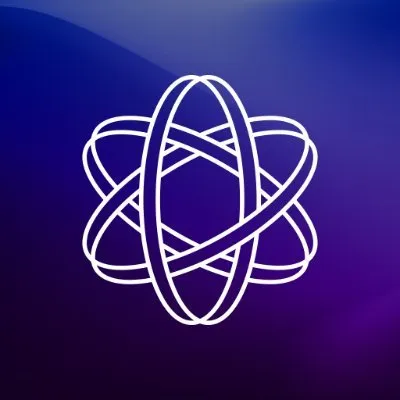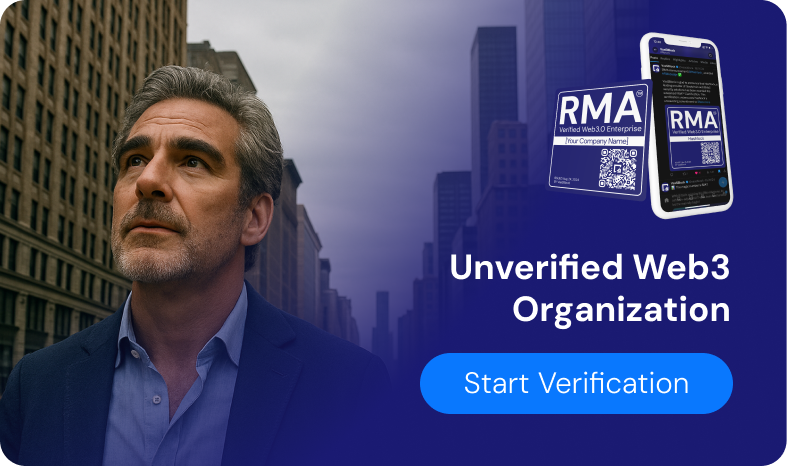
Xprnetwork
Risk Management
?Risk Management
The RMA™ is a blockchain credibility certification assessing governance, transparency, security, and results, providing trusted verification for businesses in Web3.
VaaSBlock has not audited this project and cannot vouch for this organization.
RMA™ Status: ❌ Unverified
Verification of 6 major compliance criteria.
Technology
?Technology
A collection of public facing information, data collected through partners and our own tools view we present a projects technology in one place for easy verification.
Analysis and testing of tech infrastructures.
Marketing
Alpha?Marketing
Top level look at a projects marketing capablities currently in alpha this section will grow to show quickly how a project promotes itself and the effectiveness.
Screening of user base and community feedback.
Background
?Background
Using multiple public facing sources across the web view a summary of a projects purpose, key achievements and general overview.
Collection of basic administrative documentation.
Risk Management
Last Updated
2025/4/16
Transparency
Transparency Score
Algorithmic assessment of a project’s transparency level, using multiple public data points to measure its commitment to compliance, documentation, and clarity in communication.
Transparency Score
Category Rank
A ranking that positions the organization among its industry peers, evaluating its relative performance based on key compliance, credibility, and transparency indicators.
Category Rank
Xprnetwork vs Layer-1
VaaSBlock Rank
A global ranking that compares the organization against all entities listed on VaaSBlock, reflecting its overall credibility, transparency, and operational performance versus the full Web3 ecosystem.
VaaSBlock Rank
Xprnetwork vs All Listed Organizations
Transparency
Transparency Score
Transparency Score
Algorithmic assessment of a project’s transparency level, using multiple public data points to measure its commitment to compliance, documentation, and clarity in communication.
Category Rank
Xprnetwork vs Layer-1
Category Rank
A ranking that positions the organization among its industry peers, evaluating its relative performance based on key compliance, credibility, and transparency indicators.
VaaSBlock Rank
Xprnetwork vs All Listed Organizations
VaaSBlock Rank
A global ranking that compares the organization against all entities listed on VaaSBlock, reflecting its overall credibility, transparency, and operational performance versus the full Web3 ecosystem.
RMA™
✘ UnverifiedCorporate Governance
The verification of fundamental governance, organizational structure, including verifying the entity’s legal registration and adherence to local laws and regulations.
Corporate
Governance

Team Proficency
Evaluation of an organization’s personnel, ensuring that crucial team members possess the expertise and dedication necessary to execute current business models and scale effectively.
Team
Proficiency

Technology & Security
Assessment of the organization’s technological framework, including blockchain integrations (where relevant), system architecture, and overall IT infrastructure.
Technology
& Security

Revenue Model
Comprehensively evaluation of a company’s income-generating strategies (how do they make or intend to make money), ensuring financial robustness and sustainability.
Revenue
Model

Results Delivered
The Results Delivered component of the RMA™ audit comprehensively evaluates an organization’s ability to achieve its goals and honor its commitments.
Results
Delivered

Planning & Transparency
The Planning and Transparency component of the RMA™ audit offers a thorough assessment of how an organization manages its workflow and prepares for unexpected challenges.
Planning &
Transparency

Technology
Marketing
Marketing Effectiveness
This score assesses the impact of detected marketing activity and the corresponding price movement of a token. The score understands whole market movements to ensure tokens are assessed fairly against peers.
Marketing Effectiveness
Confidence Index
This index determines our confidence in the score we have given. Generally, as more data is collected, the confidence index will increase. If a project has lots of activity, this confidence is earned faster.
Confidence Index
VaaSBlock Rank
This identifies where a project sits compared to all projects accessed for Marketing Effectiveness.
VaaSBlock Rank
Xprnetwork vs All Listed Organizations
Marketing Effectiveness
Marketing Effectiveness
This score assesses the impact of detected marketing activity and the corresponding price movement of a token. The score understands whole market movements to ensure tokens are assessed fairly against peers.
Confidence Index
Confidence Index
This index determines our confidence in the score we have given. Generally, as more data is collected, the confidence index will increase. If a project has lots of activity, this confidence is earned faster.
VaaSBlock Rank
Xprnetwork vs All Listed Organizations
VaaSBlock Rank
This identifies where a project sits compared to all projects accessed for Marketing Effectiveness.
No Chain No Gain™ Podcast ⛉
This Organization is yet to join the No Chain No Gain™ Podcast and share insights on what makes their business trustable and innovative.
💡 NCNG generated over 1 Million impressions in its first six months of existence.
PR Impact
PR Impact
VaaSBlock provides estimations to the impact that traditional digital media can have on a project. This is an early release; more areas of PR are planned in future versions.
Search Terms ? Search TermsThese are the terms we discovered the article for on page one of Google. | Est. Traffic ? Estimated TrafficWe estimate how much traffic an article will get. Generally, our estimations are slightly higher than those of more established tools. We are working on the algorithm all the time, and results could change. | Est. Value ? Estimated ValueBased on the estimated traffic we generate an estimation for what this traffic would have cost to generate if you tried to target these users with ads. The positions for the article on google and the location of the traffic are the major factors in this estimation. | |||
|---|---|---|---|---|---|
XPR Network (XPR) Price Today, News & Live Chart | Forbes Crypto Market Data source: forbes.com | XPR Network (XPR) Pr… — XPR Network (XPR) Price Today, News & Live Chart | Forbes Crypto Market Data source: forbes.com | Organic | forbes.com | ||
XPR Network source: github.com | XPR Network… — XPR Network source: github.com | Organic | github.com | ||
Proton source: Coinbase | Proton… — Proton source: Coinbase | Organic | coinbase.com | ||
Xprnetwork Xpr source: Livecoinwatch | Xprnetwork Xpr… — Xprnetwork Xpr source: Livecoinwatch | Organic | livecoinwatch.com |
| Est. Traffic | Est. Value | ||
|---|---|---|---|
XPR Network (XPR) Pr… — | |||
XPR Network… — | |||
Proton… — | |||
Xprnetwork Xpr… — |
Ratings
AlphaOverall
Aggregated Rating
The combined score with AI-driven weighted analysis to provide the best possible project rating.
5 verifications
Confidence Index
This index determines our confidence in the score we have given. Generally, as more data is collected, the confidence index will increase. If a project has lots of activity, this confidence is earned faster.
None
5 verifications
External Reviews
Third-party reviews are important for your reputation.We incorporate them into our Deep Due Diligence framework to provide a more comprehensive and transparent evaluation of each project. Collaborating with VaaSBlock ensures your reviews are not only acknowledged but actively contribute to building trust, improving your credibility, and maximizing the impact of your public reputation. Work with us now.
Background
Organization Name – Xprnetwork
Category – Layer-1
About
powered by irmaAI
irmaAIXPR Network (formerly Proton Network) is a public layer‑one blockchain built on a Delegated Proof‑of‑Stake (DPoS) consensus model and powered by the Antelope protocol. It’s designed to deliver… ultra‑fast throughput—billions of transactions per month with over 4,000 TPS and finality in minutes—while offering zero gas fees for users. Developers and applications pay via resource subscriptions, shifting cost predictability to app builders rather than end users. A distinguishing feature is its human‑readable on‑chain identity system called XPR Names, which enables users to transact via usernames instead of long wallet addresses, reducing errors and enhancing UX. Token-wise, XPR is the native token with an open supply and moderate annual inflation (about 4–5%) divided between block producers, stakers, and a steering foundation. Governance is token‑based: holders stake to vote for block producers in quarterly cycles, while also participating in protocol decisions. The ecosystem is tightly integrated with Metal Pay, Lynx Wallet, and Metal X exchange, enabling seamless fiat‑crypto flows, staking, swapping, lending, NFTs, and identity use cases across real‑world apps like e‑commerce, social media, supply chains, and banking rails. In mid‑2024, the project formally rebranded from Proton to XPR Network while consolidating Lynx and Metal Pay under the new brand. Through 2025 the ecosystem continued expanding via developer SDKs (JavaScript, iOS, Android, WebAssembly), enabling tokens, DEXs, lending features, token creation, and social apps. A major ecosystem update in March 2025 rolled out “Snipverse 2.0,” a decentralized social media platform on XPR designed for creators with integrated token rewards. Core infrastructure emphasizes WASM smart contracts written in AssemblyScript for scalable and efficient execution. Community sentiment is mixed: while users praise stability, usability, and zero fees, critics cite past controversies such as token dilution from led team compensation and slow development pace. Moderately-sized trading volume and market cap (circa $140–150 M as of mid‑2025) reflect cautious adoption. Still, proponents argue the ecosystem’s utility—spanning remittances, identity, token issuance, and social apps—is improving long‑term viability. A growing ecosystem token, LOAN, launched alongside Metal X lending, provides yield and governance utility tied to XPR holdings and liquidity pools, signaling deeper DeFi layering. While listings remain limited—with rumors of a possible Binance listing circulating—the project relies heavily on its in‑house DEX and wallets as gateways. Reddit users emphasize technical fundamentals and developer friendliness, although some express skepticism over inflation and insider sell‑off. As of 2025, XPR Network combines its foundational zero‑fee and identity features with dApp support, lending, DEX, token creation, and social layers—targeting real‑world payments, identity, token utility, and micro‑interaction use cases across industries. The roadmap through late 2025 includes additional ecosystem dApps, more lending products, broader token usage, cross‑chain integrations, and growing institutional or merchant adoption campaigns—all centered on usability, identity, and fee‑free experiences. Read More
Creation Date
December 2025
Headquarters
San Francisco, California, USA
Organization Maturity Level
Growing Business
RMA™ Type
–
Useful Links
Website – xprnetwork.org
Notable Achievements
2020
Proton Network launch
2024
Rebrand to XPR
2024
Integration Metal Pay/Lynx
2025
LOAN lending launch
2025
Snipverse 2.0 launch
- vaasblock.com /
- Layer-1 /
- Xprnetwork















